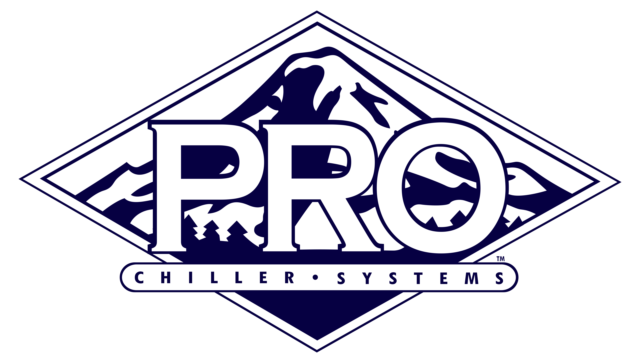To improve milk production from homegrown forages, the emphasis needs to go on the main forage – whatever that is. For example, if we are feeding primarily corn silage and only a small amount of haylage, much greater emphasis should be placed on managing the corn silage. We then need to focus on what nutrient in that forage is most influential on milk production.
In the case of corn silage, starch digestibility is easier to manage (via kernel processing or time in storage), whereas deficiencies in fiber (NDF) digestibility often require the purchase of high-fiber byproducts. Thus, managing and focusing on corn silage fiber may be the single- most important issue in getting more milk from this homegrown forage.
Many factors that influence forage fiber digestibility are out of our hands – weather, soil depth and rainfall, to name a few. Following are 10 things we can do to improve forage utilization and, hopefully, the milk production that ultimately results from feeding our homegrown forages.
1. Start with the right hybrid or variety
This is one of the easiest ways to improve digestibility. BMR corn often is 10 to 15 percentage units higher in fiber digestibility versus conventional corn silages; most other management practices or decisions will not yield that kind of improvement. Newer corn silage varieties boast improvements in starch digestibility as well, either through the production of an enzyme in the plant or through a more digestible starch. Working with an agronomist to find the right balance of forage digestibility and yield per acre is essential to a successful forage program. Differences in diets, available acreage and storage mean no one-size-fits-all solution exists.
2. Cut at the right maturity
There is a trade-off between yield and quality, and there is no “right” stage of maturity for harvest. Simply put, a farm that desperately needs heifer feed is not shooting for haylage with 190 relative feed quality (RFQ). Timing of harvest is essential; calculating when to harvest simply by the calendar is an act of the past. Taking alfalfa scissor clippings and checking corn silage dry matter (DM) can help fine-tune digestibility and ideal forage quality.
3. High-cut corn silage
Cutting higher is a double-edged sword. It results in a feed with a higher proportion of starch and more digestible fiber, but it also reduces the amount of true forage in inventory. Researchers from Penn State summarized 11 cutting height studies and found that increasing cutting height from 7 to 19 inches decreased milk per acre by 1.7 pounds. However, it increased milk per ton by 5.2 pounds and may allow a farm to buy less corn, resulting in a total cost savings on the daily ration. High-cutting corn silage needs to be considered with caution because feeding high amounts of well-fermented, high-grain corn silage may have negative effects on milkfat production.
4. Retain leaves
Often the discussion of leaf retention is framed around alfalfa, but the digestibility of leaves is greater than stems in most, if not all, plant species. One practice to achieve this goal in alfalfa is harvesting at the right DM to minimize leaf shatter. In corn silage, this could mean use of fungicides to prevent leaf diseases. When leaves are protected, the highly digestible fiber of the plant is protected too.
5. Minimize ash in your alfalfa
Ash is completely indigestible to the cow and, in fact, can be detrimental to gut health and functionality. Many practices can minimize ash in feed, including – but not limited to – raising the cutterbar of a disc mower, keeping the windrow off the ground and using flat knives on the disc mower.
6. Process well
There are two main barriers to starch digestion in the rumen. The first is the pericarp, which is the waxy outer covering of the corn kernel. Processing well means breaking the corn kernel into at least four separate pieces. Simply cracking the kernel in half is not enough. A good, unofficial thumb rule for a corn silage processing score (CSPS) goal is to multiply the corn silage DM by 2 and subtract 5. For example, if the DM of the corn silage is 32%, the goal is 59% (32 x 2 - 5). The second barrier is the prolamin protein matrix. In drier corn silages, the starch will be less accessible because of a more developed prolamin protein matrix, so the goal would be different. For corn silage that is 40% DM, the minimum CSPS goal would be 75%.
7. Use an inoculant that improves milk production
When researching which inoculant to purchase, verify that the inoculant can actually improve milk production. Ask for published, unbiased, peer-reviewed research where inoculated silages were fed to cows in a controlled setting. Look for a substantial (at least 2 pounds) improvement in milk production. Often, this improvement in milk production is because of improvements in digestibility of fiber or protein.
8. Allow for adequate storage time
Storage time is one of the best, and easiest, ways to improve milk production. As the silage sits in the silo, the prolamin protein matrix that encapsulates starch breaks down. This means the starch in the kernel is more accessible for rumen micro-organisms. Ideally, corn silage should sit in the silo untouched for at least three months before feeding to get the most milk per ton.
9. Minimize spoilage
During spoilage, micro-organisms eat soluble nutrients, which can decrease digestibility. Any management practices that minimize spoilage (covering promptly, packing well, feeding at a daily rate of at least 12 inches in the summer and 6 inches in the winter) will minimize spoilage and will support cow health so she can get the most milk out of her feed as possible.
10. Keep a healthy rumen
Keeping a healthy rumen is the most important way to improve digestibility on the farm. If the rumen pH gets too low, fiber-digesting micro-organisms can die. When that happens, it doesn’t matter what the potential digestibility of a forage is because the cow won’t be able to get any of the nutrients. A good nutritionist is integral in getting the most out of the feed. Practically, this can look like adjusting the available starch and effective fiber contents of the diet to ensure the animals have sufficient energy to produce milk without a plummet in rumen pH.
Here is one bonus recommendation: Do not fall for gimmicks or quick solutions. I encourage everyone to do their research before buying. If it seems too good to be true, it probably is. At the end of the day, there is often no one simple solution and no replacement for keeping cows healthy and having good management practices. ![]()

-
Michelle Der Bedrosian
- Forage Products and Dairy Technical Service Specialist
- Vita Plus
- Email Michelle Der Bedrosian







